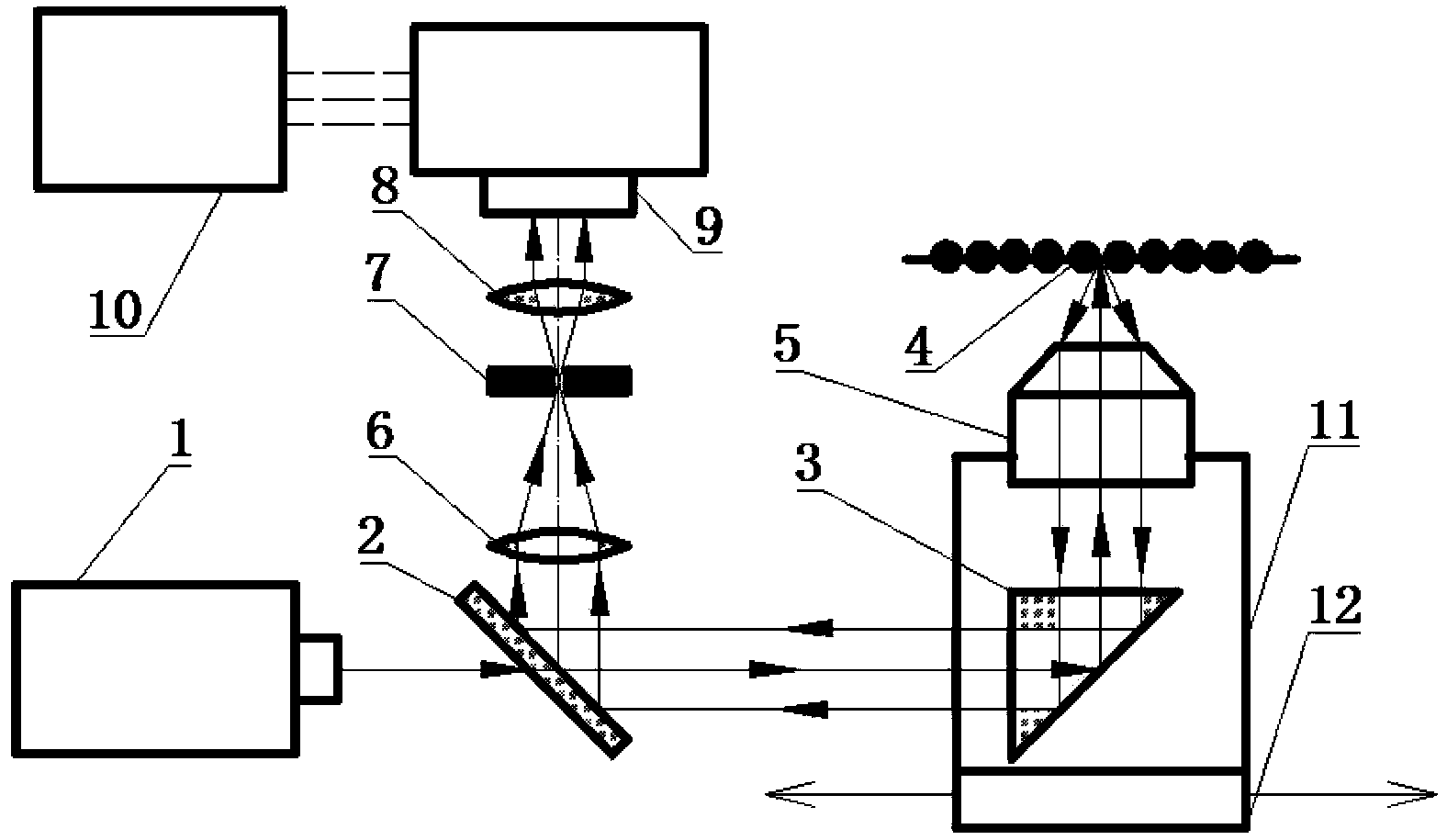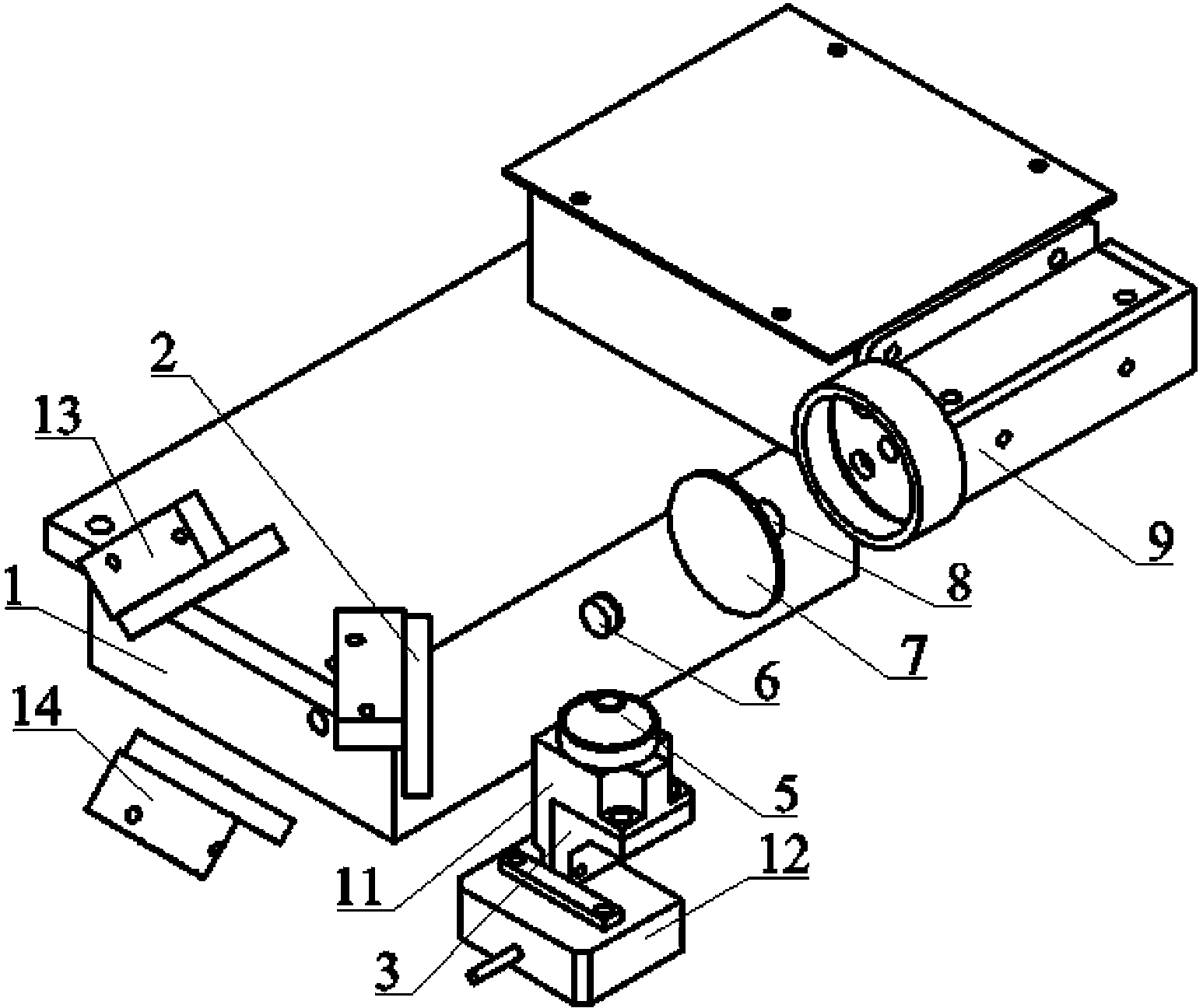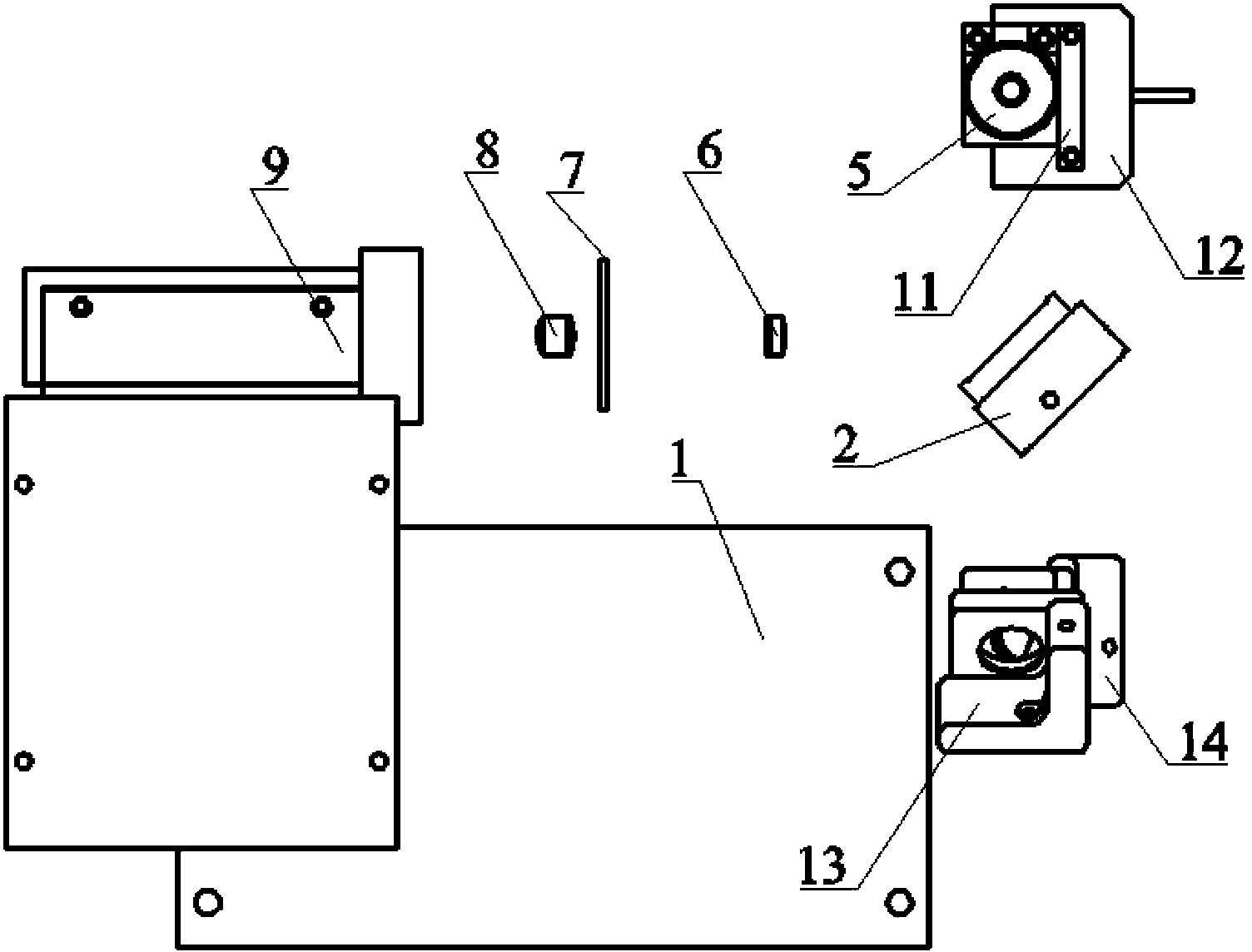Linear scanning-based fluorescence confocal detection device
A detection device and confocal technology, applied in fluorescence/phosphorescence, material excitation analysis, etc., can solve the problems of stray light interference detection, low detection limit, unsatisfactory signal-to-noise ratio, etc., to improve detection frequency and detection accuracy, eliminate The effect of interference and improved detection sensitivity
- Summary
- Abstract
- Description
- Claims
- Application Information
AI Technical Summary
Problems solved by technology
Method used
Image
Examples
Embodiment Construction
[0025] The present invention will be further described below in conjunction with the accompanying drawings, but the present invention is not limited to the following embodiments.
[0026] Such as figure 1 As shown, in the fluorescent confocal detection device provided by the present invention, firstly, the sample to be tested has a fluorescent label, and the labeled fluorescent light can emit a fluorescent signal when excited by a laser with a specific wavelength and power. A laser with a fixed wavelength can be selected for specific fluorescently labeled samples (for example, only for the detection of one or several fluorescent signals), or a laser with an adjustable wavelength can be selected to enable the instrument to detect more different samples. A dichroic prism 2 that is 135° to the optical path is set on the optical path of the excitation light emitted by the laser 1; the optical path of the transmitted light after the excitation light is transmitted through the dichr...
PUM
 Login to View More
Login to View More Abstract
Description
Claims
Application Information
 Login to View More
Login to View More - R&D
- Intellectual Property
- Life Sciences
- Materials
- Tech Scout
- Unparalleled Data Quality
- Higher Quality Content
- 60% Fewer Hallucinations
Browse by: Latest US Patents, China's latest patents, Technical Efficacy Thesaurus, Application Domain, Technology Topic, Popular Technical Reports.
© 2025 PatSnap. All rights reserved.Legal|Privacy policy|Modern Slavery Act Transparency Statement|Sitemap|About US| Contact US: help@patsnap.com



